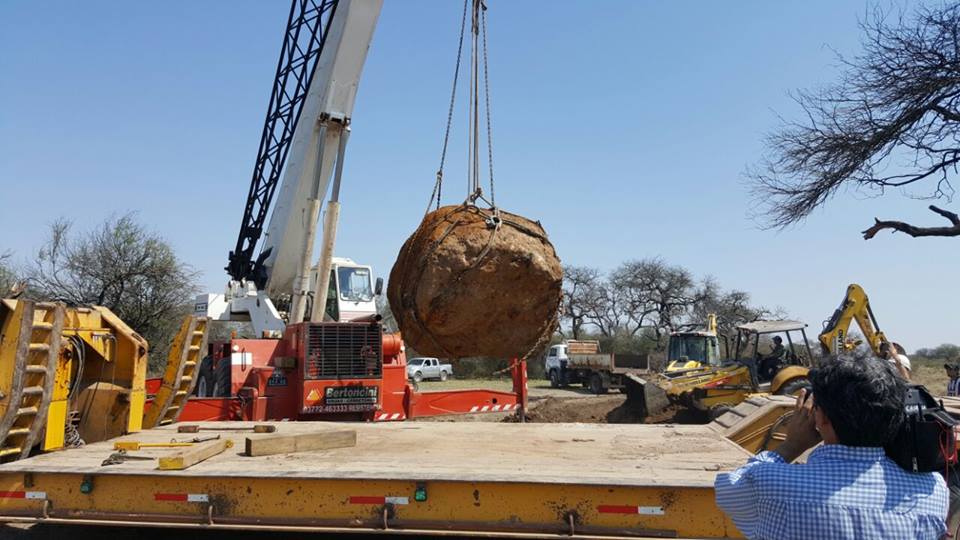
On September 10, 2016, a meteorite weighing more than 30-tons (68,000 pounds) was unearthed in Argentina’s Campo del Cielo (Spanish for “Field of Heaven”) region. The space rock that is amongst the largest intact meteorites discovered thus far is believed to be part of a massive meteor that disintegrated as it entered Earth's atmosphere approximately 4,000 — 6,000 years ago.
The excavation of the meteorite, named Gancedo (after the town near where it was found), was spearheaded by the Astronomy Association of Chaco. Extracting the massive rock from its ancient impact crater was not easy and required the use of specialized equipment and heavy chains. But it was well worth the effort given that some experts believe Gancedo may be the second largest known meteorite on the planet. But to get that prestigious title, the space rock will need to weigh more than the 37-ton (74,000 pounds) El Chaco, which was unearthed in the same region, in 1980.

Though finding two of the world’s largest meteorites in the same area may sound surprising, Campo del Cielo is well known for its space rocks, which are strewn over a 3 km wide by 19 km long area. Over the years, 100 tons (200,000 pounds) of meteorites have been recovered in the region, making Campo del Cielo the top producer of meteorite mass worldwide. What makes the meteorites unique is that they are primarily made of iron (93%) and contain only about 7% nickel. Most space rocks are not as pure.
But while Campo del Cielo may have the largest number of meteorites in the world, it is not home to the biggest space rock to ever land on our planet. That title is held by Hoba, a 66-ton (132,000 pounds) meteorite that was discovered in Namibia, South Africa, in 1920 by a farmer plowing his fields.

To prevent vandals from stealing portions of this precious rock that is believed to have crash-landed on Earth 80,000 years ago, Hoba was declared a national monument in 1955. In 1987, Mr. J. Engelbrecht, the owner of the Hoba West farm where it is located, donated the meteorite and the site to the state for educational purposes. The area has since become a popular tourist destination with thousands of people flocking annually to feast their eyes on the extraterrestrial rock. Hopefully, Gancedo, the second or third largest meteorite in the world, will be similarly preserved for future generations to admire.
Resources: skyandtelescope.com,cnet.com,new.com.au, wikipedia.org